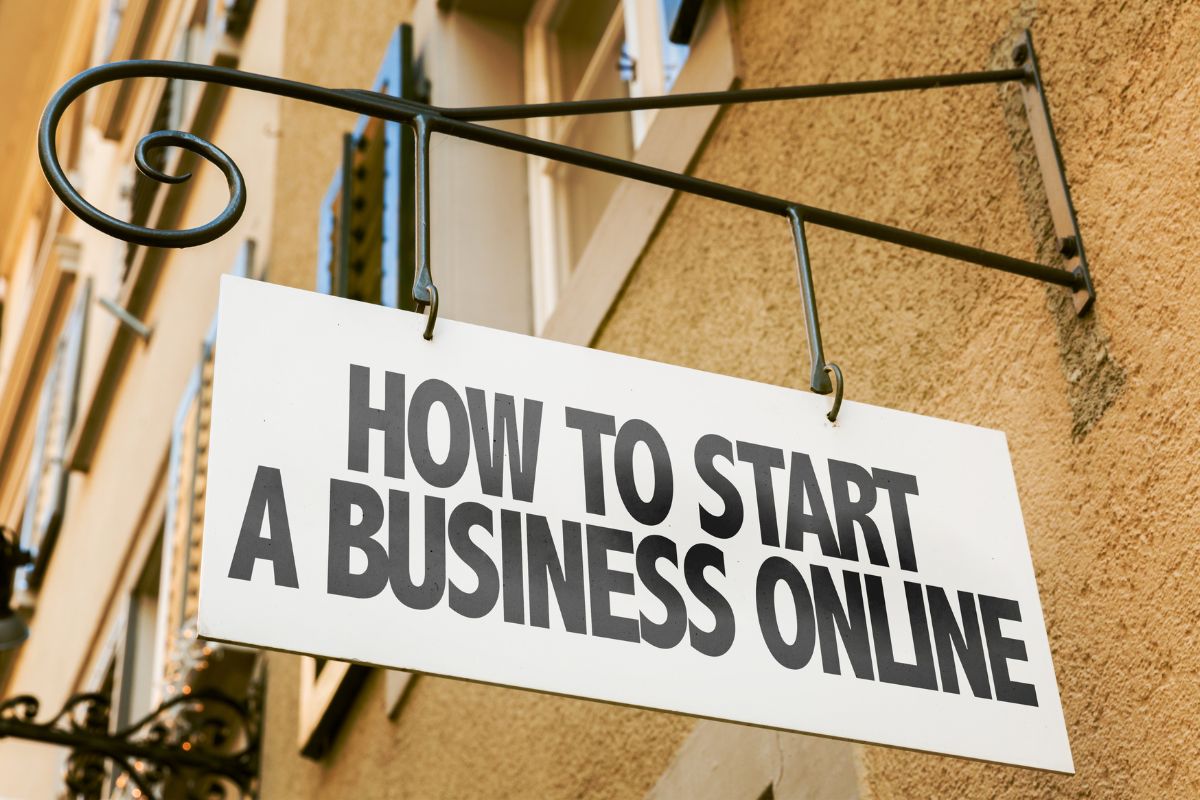Starting an Online Business with No Money

Starting a business online with virtually zero capital is more possible than ever. Smart models like freelancing, dropshipping, affiliate marketing and content creation let you begin with little more than time and effort. For example, affiliate marketing is a “hands-off online business” where you don’t handle products – you simply promote other people’s products and earn commission. Similarly, millions have found success by freelancing: Upwork reports 4.7 million American freelancers earned six-figure incomes in 2024. With focus and free tools, you can tap into these opportunities without any upfront investment.
Freelancing
Freelancing means selling your skills (writing, design, coding, marketing, etc.) directly to clients. You invest no money – just your time and talent. To get started:
- Identify your skill. Choose a service you can offer (e.g. graphic design, web development, SEO writing).
- Build a portfolio. Create a few sample projects or share past work. (One Upwork freelancer started with three infographic designs as her portfolio and quickly landed real design gigs.)
- Join freelance platforms. Sign up on sites like Upwork or Fiverr (free to join) and create a professional profile. You can also showcase your work on a free personal site (WordPress.com, GitHub Pages, or a LinkedIn page).
- Apply for projects. Browse relevant job listings and submit brief proposals or gig offers. Use your portfolio to demonstrate your ability. Even low-paying first jobs can earn reviews and build momentum.
- Deliver high quality. Complete work on time and satisfy your clients to earn good ratings. Reinvest some of your earnings into better tools or self-education if needed.
- Scale gradually. As you accumulate positive feedback, increase your rates. You’ll often find higher-paying clients as your reputation grows.
Freelancing is booming: almost 38% of Americans (64 million people) did some freelance work in 2023. By starting small and focusing on skills, you can join this trend with zero startup cost.
Dropshipping
Dropshipping lets you sell products online without ever buying inventory. When a customer orders from your store, you simply pay the supplier to ship directly to them – so you never stock or handle merchandise. Steps to begin dropshipping for free:
- Pick a niche and research. Use free tools like Google Trends to find products with steady or rising interest. Check social media and Etsy for hot items. Choose a niche you like (pet supplies, gadgets, apparel, etc.) to stay motivated.
- Select suppliers. Find reliable dropshipping or print-on-demand suppliers (AliExpress, Printful, etc.) that charge no monthly fee. For example, Printful lets you design custom products and only charges when you sell.
- Set up a free store. You have several cost-free options: use Printful’s free “Quick Store” to launch in minutes, or list products on marketplaces like Etsy, eBay or Amazon (they charge no monthly subscription, only small selling fees). (Shopify offers a $1 trial, if you prefer an ecommerce platform.)
- List your products. Write clear titles and descriptions. Design appealing images (using Canva, a free design tool) or use supplier photos. Make your store look professional to build trust.
- Process orders. When a customer buys, simply purchase the item from your supplier to be shipped. Because you only pay after you sell, there’s no upfront cost for inventory.
- Promote your store. Drive free traffic by optimizing your site for search (SEO), posting about your products on social media, or creating content (e.g. product review posts or videos). Engage with customers on Instagram, Facebook or TikTok to build interest.
Remember, many dropshippers started on a shoestring. For example, one entrepreneur found a trending niche (bubble-tea plush toys) and earned $19,000 profit in just two months by smartly targeting fans of that trend. Stay persistent, test products, and adjust based on what sells.
Affiliate Marketing
Affiliate marketing lets you earn commissions by promoting other companies’ products. You put unique affiliate links in your content or social posts, and if someone buys through your link, you get paid (often 5–50% of the sale). There’s no inventory or customer service – it’s a low-risk way to start earning. How to begin affiliate marketing:
- Choose a niche. Focus on a topic you enjoy or know (tech gadgets, health products, online courses, etc.).
- Join affiliate programs. Sign up for affiliate networks (free) such as Amazon Associates, ClickBank, ShareASale, or individual programs for companies in your niche.
- Set up a platform. Create a free website or blog (WordPress.com, Blogger) or a content channel (YouTube, Instagram). Even a free Linktree page (just one page with multiple links) can work to collect your best affiliate links.
- Create valuable content. Write blog posts, make videos or social posts reviewing or recommending products. Naturally include your affiliate links in helpful posts or guides.
- Drive organic traffic. Share content via SEO (so Google finds it) and on social media. Offer real value (tips, how-tos, comparisons) to attract readers.
- Convert visitors. When people click your links and make purchases, you earn commissions. As scribage notes, affiliate marketing is “hands-off” – your job is marketing the products, not handling them.
With time and quality content, affiliate income can grow. Use free tools like Linktree to gather and share all your affiliate links, and track what performs best. You don’t pay anything until you start earning.
Content Creation (Blogs, YouTube, etc.)
Creating content is another zero-cost business: you share information or entertainment and monetize the audience. For example, start a blog or YouTube channel on a subject you love. Platforms like WordPress.com, Blogger or YouTube are free – you can publish without paying anything. Steps for content creation:
- Pick your topic. What are you passionate about? (Travel, cooking, tech tutorials, fitness, etc.)
- Start with what you have. Use your smartphone or home computer to create content. You don’t need fancy equipment at first.
- Create a free site/channel. Set up a free blog (WordPress.com or Blogger) or YouTube channel. These platforms cost nothing to start.
- Design your brand. Make a simple logo or banner using Canva (free). Keep your branding consistent so people recognize you.
- Post regularly. Publish articles or videos on a schedule (e.g. weekly). Original, helpful content (how-to guides, lists, reviews) attracts search traffic. For videos, good lighting and clear audio (even a smartphone) are enough to begin.
- Use social media. Share your content on Instagram, Facebook, TikTok, or Pinterest to reach people. Encourage friends to subscribe/follow.
- Monetize your audience: Apply for Google AdSense on your blog or YouTube Partner Program to run ads. Include affiliate links in posts/videos (as scribage suggests. You can also sell your own products: create an ebook or course and sell it on a free platform like Gumroad. Gumroad has no monthly fee – it only takes a 10% cut when you make a sale. This lets you start a digital storefront with zero overhead.
- Build community. Respond to comments and engage with viewers/readers to build trust. Loyal followers will come back and tell friends about you.
Consistency and quality are key. It may take months to build an audience, but the startup cost is essentially zero. As one guide notes, blogging and video businesses can be launched on “very low start-up costs”. Stick with it, and over time ad revenue, sponsorships or product sales can become steady income.
To attract readers/viewers without spending money, focus on free growth strategies. Make sure your content is optimized for search engines (good keywords, fast loading sites) so people find you online. Use social media organically: post consistent, authentic content that adds value, and engage with your audience to build trust. Don’t ignore email: collect subscribers (with a free Mailchimp or Newsletter tool) and send out occasional updates – email marketing remains “an incredibly effective” and cheap way to boost traffic.
Validating Your Idea and Growing Organically
Before fully committing, test your idea quickly at no cost. For instance, create a simple landing page (using a free builder or trial) describing your product or service, and invite people to sign up or provide feedback. Darius Foroux recommends measuring sign-ups as a key metric: if about 10% of visitors join your waiting list, you’re on the right track. If nobody responds, reconsider the concept early. Use free tools like Google Forms or Carrd.co to gather email signups or survey interest.
Once you launch, grow without ads by leveraging content and community. Keep writing blog posts or making videos that solve problems for your target audience. Encourage readers to share and leave reviews (word-of-mouth is powerful). Partner with complementary creators or local businesses for shout-outs or collaborations. According to business experts, optimizing your website for SEO is “a free and simple way to improve your online visibility”. Posting genuine, consistent content on social media builds awareness over time. You can also run contests or giveaways (sharing costs with a partner) to boost engagement. Above all, give people value – helpful content will naturally bring traffic back to you.
Finally, stay scrappy: re-invest any small profits into your business (e.g. a domain name, a modest web host, or a premium tool) only once you’ve proven demand. In the beginning, rely on free resources: Canva for design, WordPress.com or Medium for publishing, Linktree for link aggregation, and social media for promotion. By validating early and focusing on organic growth (SEO, content marketing, email outreach), you can attract customers and scale your venture – all without ever paying for advertising.






